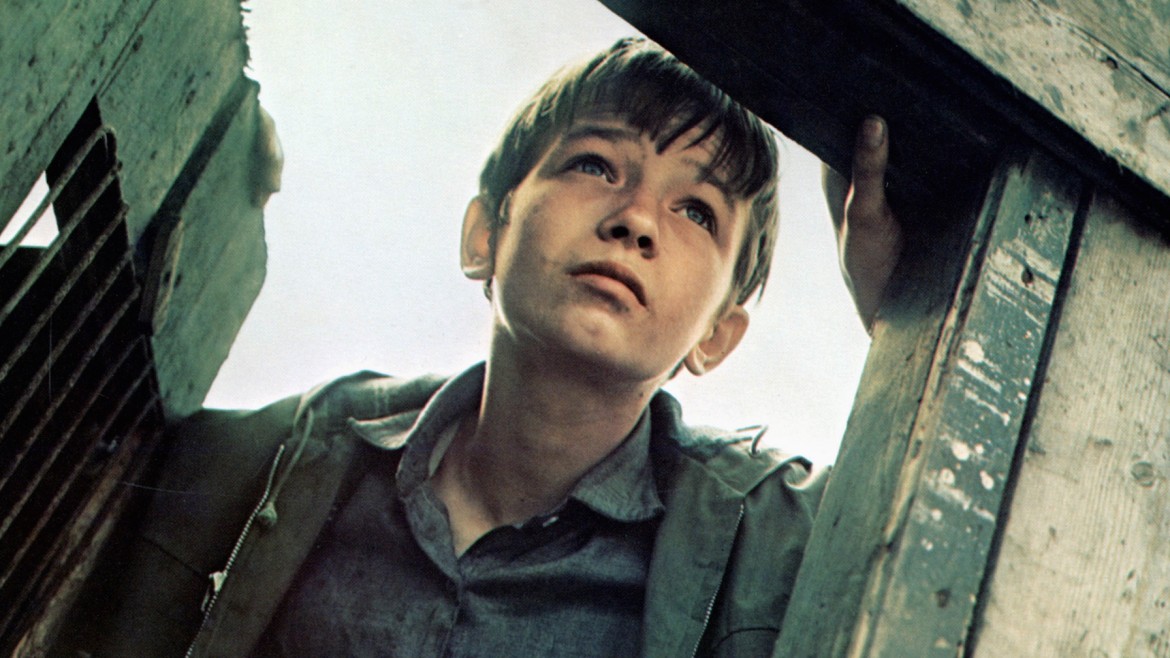Exploring Social Issues Through the Lens of Cinema
Introduction: The Power of Film in Addressing Social Issues
Cinema has long been a powerful medium for storytelling, captivating audiences around the world with its ability to entertain, inspire, and provoke thought. Beyond that, film often acts as a mirror to society, reflecting both its triumphs and tribulations. In its most impactful form, cinema can illuminate social issues, offering audiences a nuanced understanding of the complexities that exist within our cultures and communities.
From the early days of black-and-white silent films to today’s digital blockbusters, directors, screenwriters, and actors have engaged with pressing social topics such as race, gender, inequality, and environmental concerns. This engagement isn't just incidental; it's a crucial means of sparking conversations, encouraging empathy, and ultimately driving change.
Historical Context: Cinema as a Societal Mirror
Cinema’s potential to address social issues is rooted deeply in its history. The early 20th century saw filmmakers like Charlie Chaplin tackle themes of poverty and class disparity in movies like "Modern Times." These early works laid the foundation for a long tradition of socially conscious filmmaking. As the decades progressed, films began to engage more deeply with complex social issues, creating narratives that challenged prevailing norms and encouraging audiences to reflect on the status quo.
The 1960s and 1970s, for example, were rich with films addressing social upheavals such as the civil rights movement in the United States. Films like "Guess Who’s Coming to Dinner" and "In the Heat of the Night" broke new ground in representing racial tensions and integration on the big screen.
In the years that followed, directors like Spike Lee and Ava DuVernay continued to use their platforms to explore African American experiences and racial inequalities. Spike Lee’s "Do the Right Thing," released in 1989, is noted for its raw and intense portrayal of racial tension in an urban neighborhood, while Ava DuVernay’s "Selma" provides a historical account of the civil rights movement and underscores the ongoing struggle for racial equality.
Modern Cinema and Social Issues
The impact of cinema on social issues has not waned with time. The modern era of filmmaking has seen an even broader spectrum of issues being brought to light, thanks in part to the expansion of global cinema and the diversity of voices that now characterize the industry. This diversity has allowed for more authentic and varied narratives, offering insights into the lives and struggles of people worldwide.
Films like "Parasite," the South Korean film that won the Academy Award for Best Picture in 2020, highlight issues of class disparity, portraying the vast gap between rich and poor in modern-day Seoul. The film’s storytelling, coupled with its suspenseful narrative, served as a global conversation starter about economic inequality.
Similarly, environmental issues have moved to the forefront in the cinematic sphere with films like "An Inconvenient Truth" and "Before the Flood," which demonstrate the urgent need for climate action. These documentaries have inspired audiences to think critically about their environmental footprint and urged policymakers to address the pressing issue of climate change.
Cinema as a Tool for Change
Movies do more than merely represent social issues; they also have the power to inspire reform. By raising awareness and fostering dialogue, films can play a pivotal role in driving societal change. This power of cinema is recognized in initiatives like the Human Rights Watch Film Festival, which screens films dedicated to human rights issues, acting as a catalyst for engagement and action.
Moreover, film's influence extends beyond its immediate viewers. Scholars and activists often reference films in discussions about policy and social reform. Documentaries, in particular, have proven to be effective tools for educating audiences and advocating for change. Films like "13th," which examines the intersection of race, justice, and mass incarceration in the United States, highlight the systemic racism embedded within the legal system and have been used as educational tools within both academic and activist circles.
Conclusion: The Ongoing Dialogue
Cinema’s role as a medium for social change is undeniably powerful, fostering empathy, understanding, and dialogue. By depicting social issues with authenticity and complexity, films provide a platform through which audiences can engage with and reflect upon important societal concerns. As filmmakers continue to innovate and craft narratives that resonate with global audiences, the potential for cinema to influence and inspire remains boundless.
As new generations of filmmakers emerge, bringing fresh perspectives and diverse stories to the screen, the exploration of social issues through cinema will continue to evolve. Whether through heart-wrenching dramas or enlightening documentaries, these films will persist in challenging viewers to confront the social issues of our time and imagine a better world for the future.
The Role of Diversity and Representation in Cinema
In recent years, the call for greater diversity and representation in cinema has grown louder than ever before. Audiences and critics alike have begun to challenge the industry to not only tell diverse stories but to tell them authentically. This move towards inclusivity has resulted in films that depict a wider range of experiences, allowing for a more comprehensive examination of social issues through varied cultural lenses.
The importance of representation goes beyond mere visibility; it impacts the narratives that reach mainstream consciousness and influences public perception. Films like "Black Panther" and "Crazy Rich Asians" have shattered stereotypes by featuring predominantly Black and Asian casts, respectively, and have proven to be both commercially successful and culturally significant. "Black Panther," in particular, offered a transformative vision of Africa through the fictional kingdom of Wakanda, challenging dominant narratives of the continent as impoverished and technologically backward.
Inclusion also extends to behind-the-scenes roles, where diverse directors, writers, and producers can craft stories with authenticity and nuance. The shift towards inclusivity provides opportunities for underrepresented communities to see themselves reflected in multifaceted roles. This representation challenges long-standing stereotypes and broadens the scope of cinematic storytelling, encouraging audiences to engage with a wider array of social issues.
Cinematic Approaches to Gender and Identity
Gender issues and representations of identity have long been a focus in cinema, with films exploring the complexities of gender roles, feminism, and sexuality. These narratives challenge societal norms and offer insights into the lived experiences of individuals whose stories have historically been marginalized or misunderstood.
Films like "Thelma & Louise" and "Moonlight" have made significant contributions to the discourse on gender and identity. "Thelma & Louise," a trailblazing film released in 1991, tackled themes of female empowerment and autonomy within a patriarchal society. It prompted discussions about gender roles and the systemic barriers women face, both of which remain relevant topics today.
"Moonlight," which won the Academy Award for Best Picture in 2017, offers a poignant exploration of race, masculinity, and sexuality through the life of a young Black man growing up in Miami. The film’s intimate storytelling and stunning cinematography invite audiences to contemplate the intersectionality of identity and the nuances of personal and cultural expectations.
Meanwhile, the increased visibility of LGBTQ+ narratives in films like "Call Me by Your Name" and "Portrait of a Lady on Fire" suggests a growing recognition and acceptance of diverse sexual orientations and gender identities. These films not only amplify LGBTQ+ voices but also invite wider discussions about love, acceptance, and equality.
The Impact of Digital Platforms on Socially Conscious Cinema
The rise of digital platforms and streaming services has significantly transformed the landscape of cinema, expanding access to a diverse array of films that spotlight social issues. Platforms like Netflix, Hulu, and Amazon Prime Video have democratized film distribution, allowing independent and international films to reach audiences that were previously inaccessible through traditional cinema channels.
This shift has empowered filmmakers from around the world to share their stories on a global stage, further enriching the dialogue around social issues. Documentaries like "The Social Dilemma" explore the pervasive influence of social media on society, while "American Factory" delves into the complexities of globalization and labor relations.
Moreover, streaming platforms have enabled the proliferation of docuseries, which provide a deep dive into intricate social issues over several episodes. Productions like "When They See Us," directed by Ava DuVernay, offer an unflinching examination of racial injustice and systemic failure within the American justice system, bringing urgent and necessary topics to the forefront of public consciousness.
The accessibility of these platforms also means that audiences can consume socially conscious cinema at their own pace, providing opportunities for reflection and engagement with content that might otherwise be overlooked in traditional viewing formats.
Challenges and Critiques
Despite the significant strides made in addressing social issues through cinema, there are inherent challenges and criticisms that continue to surface. One of the primary challenges is the industry's tendency to capitalize on "social issue" films without necessarily committing to meaningful change within the industry itself. Tokenism and performative allyship can undermine the impact of films that aim to address serious social concerns.
The authenticity of representation is another critical area of scrutiny. Films that claim to tackle social issues must be crafted with care and attention to ensuring that the stories they tell do not perpetuate harmful stereotypes or misrepresent the communities they aim to depict. Misrepresentation can contribute to a skewed understanding of social issues, leading to misconceptions and reinforcing biases.
Additionally, the commercial nature of the film industry means that some socially conscious films struggle to secure funding or distribution, limiting their reach and impact. Independent filmmakers, in particular, often face financial barriers that can stifle creative expression and the exploration of challenging social narratives.
Conclusion: The Future of Socially Conscious Cinema
As the film industry continues to evolve, the role of cinema as a platform for addressing social issues is likely to grow ever more critical. By embracing diversity, fostering authentic representation, and leveraging digital platforms, cinema can continue to engage with and illuminate the complex social issues of our time.
While challenges remain, the ongoing dialogue between filmmakers, audiences, and industry stakeholders promises to produce a rich tapestry of stories that reflect the diverse and dynamic realities of our world. Through cinema, we have the opportunity to confront social issues, challenge the status quo, and stimulate meaningful conversations that drive progress and inspire change.
Educational Potential of Cinematic Storytelling
Cinema’s ability to portray social issues with emotional depth and narrative complexity makes it a valuable tool for education. Films have the potential to illuminate historical events, cultural practices, and societal challenges in a way that is accessible and engaging. In educational settings, cinema can supplement traditional learning methodologies by adding a human dimension to historical facts and figures.
Documentaries, in particular, are invaluable resources for educators looking to address social issues in the classroom. With their factual narratives and real-world footage, they offer unique insights into complex topics such as human rights, environmental sustainability, and global conflicts. Films like "He Named Me Malala" provide a personal and evocative look into Malala Yousafzai's activism for girls’ education, encouraging students to consider the impact and importance of education access globally.
Moreover, feature films can also serve as springboards for discussion and critical thinking. Historical dramas like "Hidden Figures" highlight untold stories of marginalized communities, prompting audiences to reflect on the systemic barriers that still exist today. By fostering empathy and understanding, films can inspire young audiences to engage more deeply with social justice and activism.
Community Engagement Through Cinema
Beyond its educational potential, cinema also possesses the power to bring communities together, catalyzing social change through collective action. Film festivals, screenings, and community events centered around socially conscious cinema create spaces for dialogue and reflection, allowing for a shared experience that transcends individual perspectives.
Initiatives like the Sundance Film Festival and the Toronto International Film Festival have long supported films that address pressing social issues, providing a platform for filmmakers to reach a wide audience. These festivals often feature panel discussions and Q&A sessions that engage filmmakers, activists, and audiences in meaningful conversations about the issues depicted onscreen.
Smaller community-based screenings can also be instrumental in raising awareness and inspiring local activism. Such events often serve as a catalyst for grassroots initiatives, where concerned citizens come together to discuss regional issues and brainstorm solutions. By fostering a sense of connection and shared purpose, these cinematic experiences highlight the role of community in addressing and resolving social challenges.
The Intersection of Technology and Cinema
As technological advancements continue to reshape the film industry, new opportunities are emerging for storytelling and social issue exploration. Virtual reality (VR) and augmented reality (AR) technologies are at the forefront of this evolution, providing immersive experiences that can enhance the audience’s understanding of complex social issues.
VR, for instance, offers a unique perspective by placing viewers in the shoes of characters, creating an empathetic experience that is visceral and direct. Projects like "Clouds Over Sidra," a VR film about a young Syrian refugee living in a camp, provide audiences with a firsthand look at the trials and tribulations faced by displaced individuals. This form of immersive storytelling encourages audiences to engage with social issues in a profoundly personal way.
Moreover, interactive films and digital storytelling initiatives allow audiences to actively participate in the narrative, making decisions that can lead to different outcomes. This interactivity not only makes the experience more engaging but also highlights the complexity and multifaceted nature of social issues, encouraging audiences to consider different perspectives and solutions.
Challenges and Opportunities for Future Filmmakers
While the potential for cinema to address social issues is immense, emerging filmmakers face both challenges and opportunities in their quest to tell impactful stories. The competitive nature of the film industry can make it difficult for new voices to break through, particularly those from marginalized communities who may encounter systemic barriers to entry.
However, the digital age offers opportunities for independent filmmakers to find alternative distribution channels and connect with global audiences. Crowdfunding platforms and social media have democratized the process of film production and promotion, enabling filmmakers to bypass traditional gatekeepers and reach supporters directly. This empowerment of independent voices can lead to more diverse and representative storytelling, as filmmakers are no longer solely reliant on major studios and distributors.
Mentorship programs, film labs, and diversity initiatives further provide aspiring filmmakers with the resources and support needed to develop their skills and bring their stories to life. The support from these programs can enable filmmakers to address social issues in innovative ways, contributing to a more inclusive and socially engaged film landscape.
Conclusion: The Ever-Evolving Role of Cinema
As cinema continues to evolve, so too does its role in exploring and addressing social issues. The dynamic nature of the film industry, combined with the proliferation of digital technology, ensures that filmmakers and audiences alike can continue to engage with the pressing social challenges of our time.
Through the power of storytelling, cinema remains a formidable tool for fostering empathy, understanding, and conversation. By embracing diverse voices and innovative storytelling techniques, filmmakers can continue to push the boundaries of social issue exploration, creating works that challenge, inspire, and motivate audiences to effect change.
In an ever-changing world, the stories told through cinema will continue to resonate, serving as beacons of hope and catalysts for action. As we look to the future, the potential for cinema to illuminate the path toward a more equitable and just society remains profound, reminding us of the transformative power of stories.





















Comments